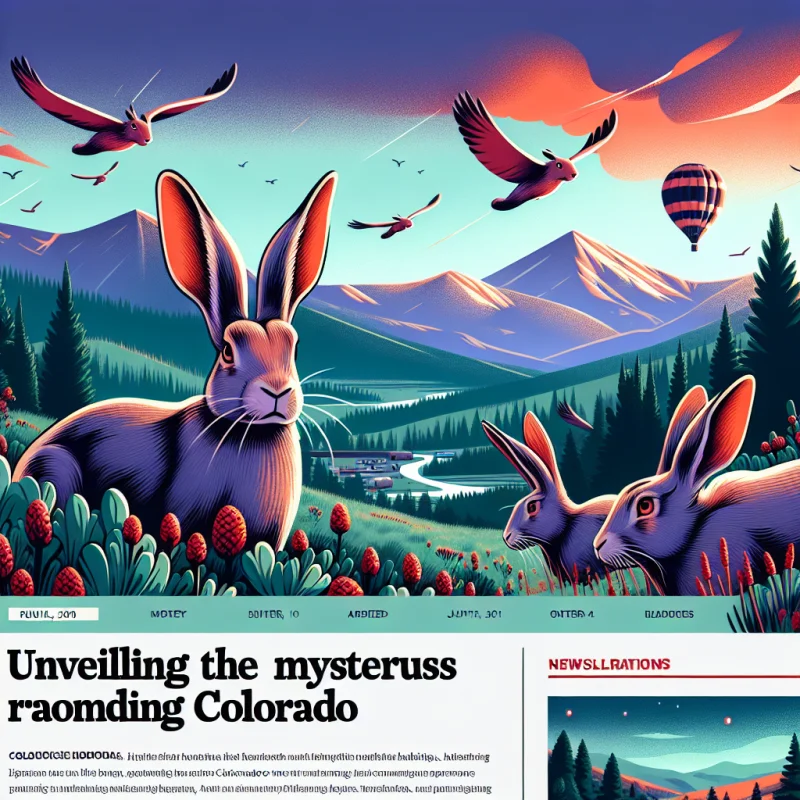In a peculiar turn of events, Colorado residents have been startled by the sight of horned rabbits hopping around Fort Collins. These rabbits, far from the usual fluffy and adorable creatures, sport horn-like growths on their faces and bodies, leading to comparisons to zombies and demons. One eyewitness described a rabbit with what appeared to be “black quills or black toothpicks sticking out all around his or her mouth.” Contrary to a horror movie script, these rabbits are afflicted with cottontail rabbit papillomavirus, a skin disease causing alarming growths. Kara Van Hoose, a spokesperson from Colorado Parks and Wildlife, explained that the virus manifests as wart-like growths ranging from small nodules to larger tentacles or horns on their faces. The rabbit papillomavirus, originally identified in the 1930s by cancer researcher Richard E. Shope, is primarily transmitted through bites from ticks, fleas, and mosquitoes. The infection tends to peak during the summer months when biting insects are most active. While wild cottontail rabbits typically develop warty, black lesions, domestic rabbits may exhibit tumors on their legs, which can be painful and persistent. Despite the unsettling appearance, the papillomavirus is often benign, with around 35% of affected rabbits naturally clearing the infection within six months. However, in severe cases, the growths can impair the rabbits’ ability to eat, drink, or see clearly, ultimately leading to life-threatening complications. Importantly, the rabbit papillomavirus poses no risk to humans and cannot be transmitted to other animals. Colorado Parks and Wildlife advises residents to refrain from touching or helping infected rabbits to maintain wildlife safety protocols. The discovery of these horned rabbits has captivated public interest, with Valerie McKenzie, a professor at the University of Colorado, highlighting the uniqueness of disease manifestations in animals. McKenzie hopes that the attention garnered by the Colorado “zombie rabbits” will drive further research to enhance disease understanding. While the exact number of infected rabbits remains uncertain, reports have been predominantly from the northern part of the state. Colorado Parks and Wildlife has been inundated with inquiries about the rabbit papillomavirus, making it one of their busiest periods. Van Hoose, amidst the media frenzy, remains intrigued by the diverse reactions to the horned rabbits, indicating a mix of fascination and repulsion. As the mystery surrounding the horned rabbits unfolds, wildlife enthusiasts and experts await further insights into the enigmatic world of animal diseases, hoping to shed light on this captivating phenomenon.

Unveiling the Mysterious Horned Rabbits Roaming Colorado

Recent Posts
- Forging a Path to Nuclear Stability: Trump and Putin’s Potential Agreement in Alaska
- Cross-Border Travel Trends Shift: U.S. Visitors Drive to Canada Outnumber Canadian Trips to U.S.
- Embracing Change: Ontario Public Servants to Return to Full In-Person Work by January
- Unexpected Twist in Irish Presidential Race as Mairead McGuinness Steps Down
- New Report Reveals Surprising Trends in American Physical Activity
Recent Comments
No comments to show.











